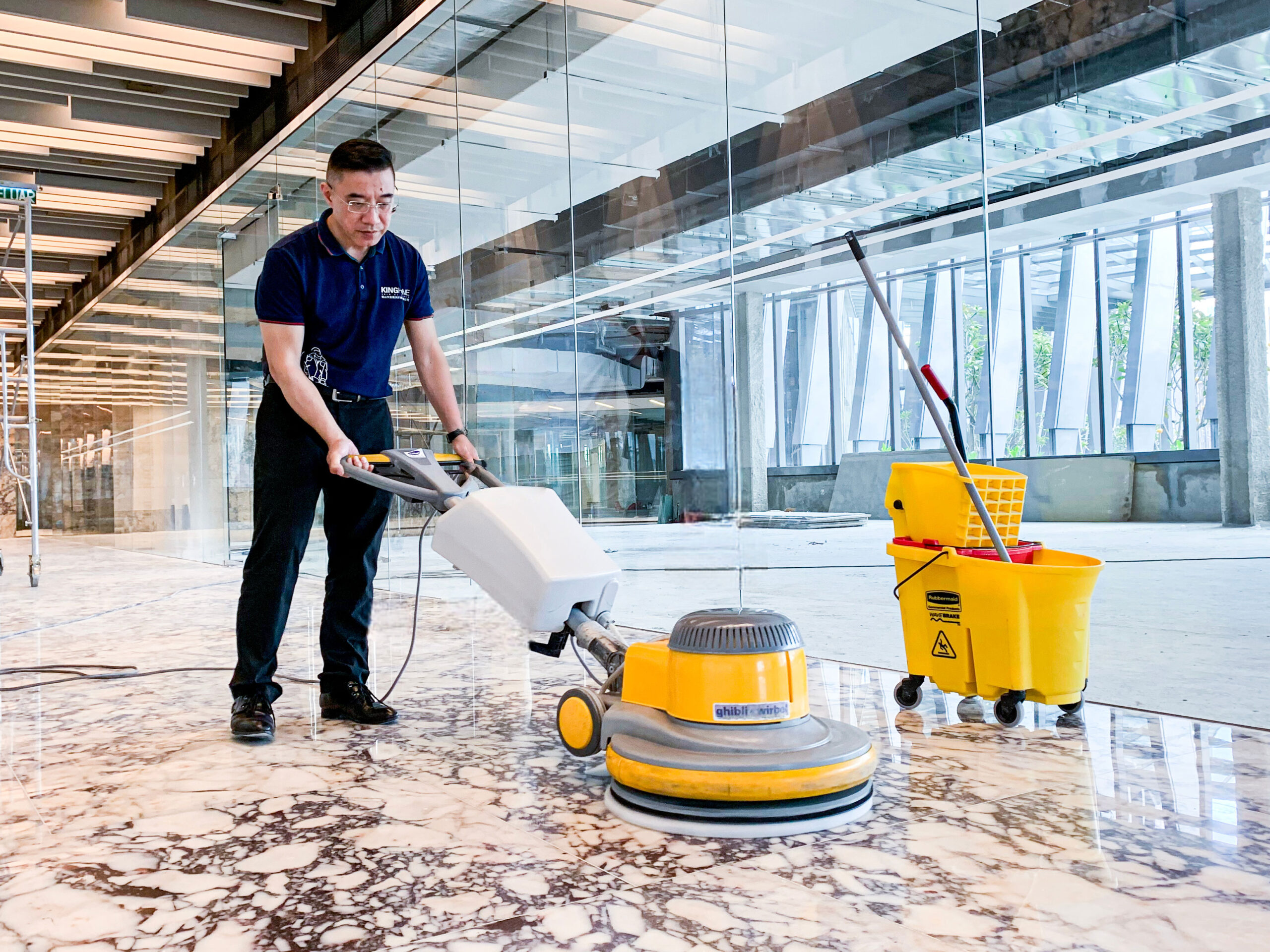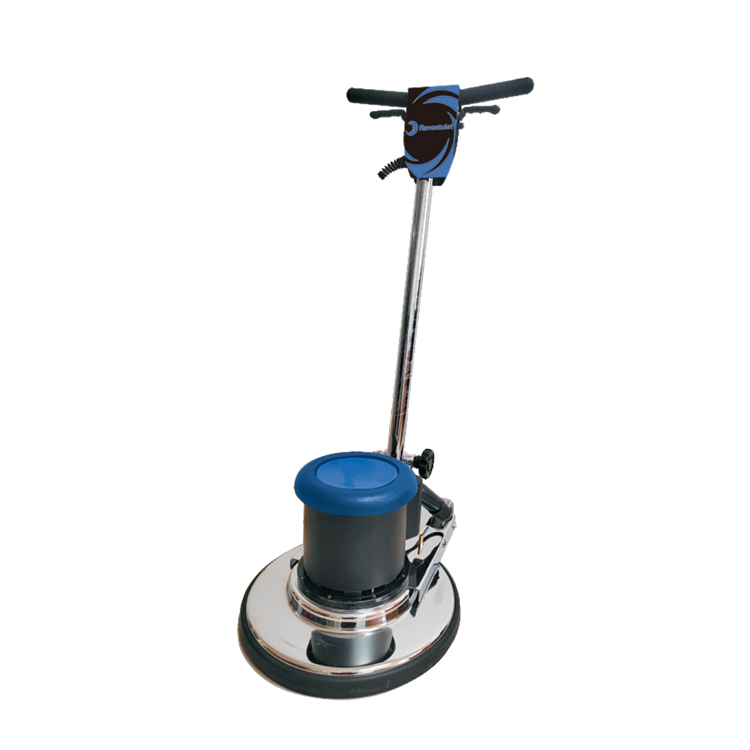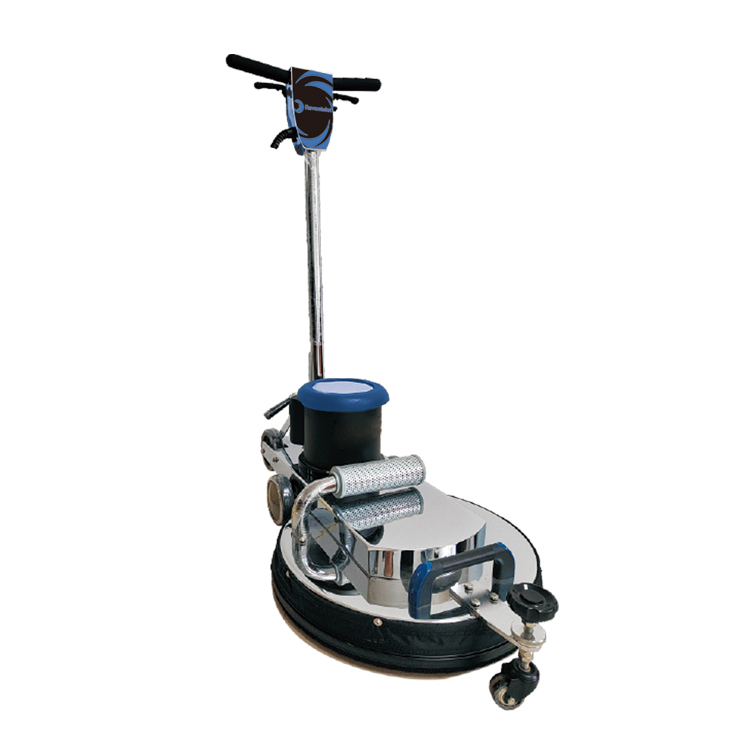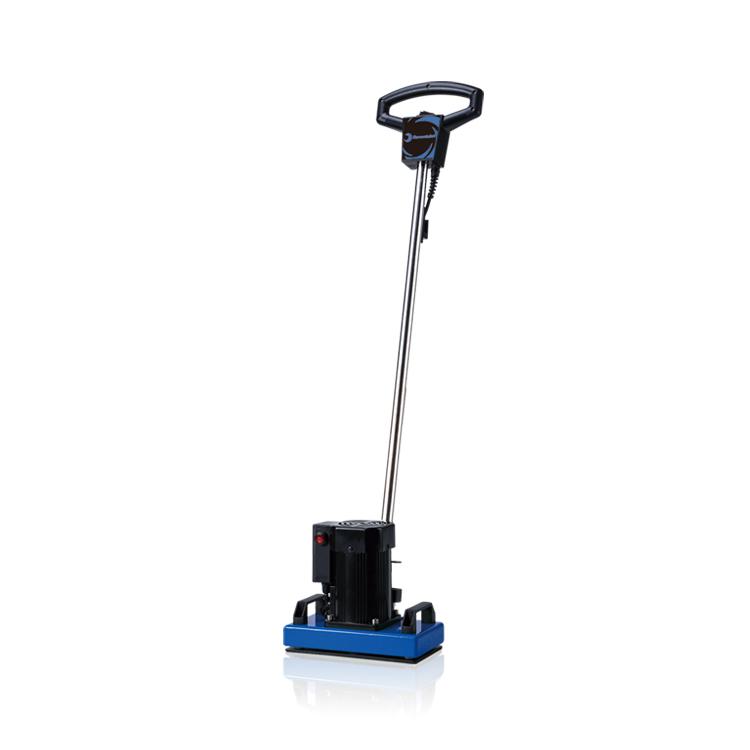WELCOME TO KINGHOME
Get A Free Quote
We will get back to you within 8 hours

Selecting industrial floor polishing equipment requires evaluating three interconnected specifications—rotational speed (RPM), working diameter, and power consumption—against your stone type, facility square footage, and operational budget. For marble and travertine crystallization, low-speed machines (175-300 RPM) activate chemical reactions without thermal damage; granite maintenance demands mid-range speeds (300-800 RPM) for mechanical polishing; while high-speed burnishers (1,500-2,000 RPM) create mirror finishes on sealed surfaces. This technical comparison guide examines how these specifications translate to measurable performance outcomes including productivity rates, energy costs per square foot, and equipment lifecycle value based on Kinghome’s 18 years of stone care expertise across commercial, hospitality, and institutional installations.
Low-speed machines operating at 175-300 RPM serve as the primary technology for crystallization—a chemical process that converts the top 0.8-1.2mm of calcium-based stone (marble, limestone, travertine) into a harder, glossier, more durable surface. The controlled rotational velocity generates precise thermal energy (145-165°F) that activates chemical compounds without exceeding the 185°F threshold where calcium carbonate begins degrading.
Technical Performance Parameters:
Kinghome’s Green Shield and Golden Shield crystallization compounds demonstrate optimal performance at 250-280 RPM, where pad friction activates pH 8.2 formulations designed specifically for calcium-based stone surfaces. Field performance data from commercial installations shows these formulations deliver 8,000-12,000 square feet coverage per pound with VOC content below 50 g/L, meeting stringent California CARB environmental standards.
Best Applications:
Machines operating at 300-800 RPM bridge the gap between chemical crystallization and mechanical polishing, providing versatility for facilities with multiple stone types or mixed maintenance requirements. The Revontulet GS-20D dual-speed single-disc scrubber exemplifies this category, offering 180 RPM for crystallization and wax applications plus 310 RPM for spray-buffing and general maintenance.

Dual-Speed Operational Advantages:
For granite and engineered quartz surfaces with higher hardness ratings (Mohs 6.5-7), the 600-800 RPM range enables mechanical polishing using resin-bonded diamond pads. This speed range generates sufficient friction for abrasive cutting action while maintaining operator control and equipment stability.
Best Applications:
High-speed polishers operating at 1,500+ RPM create ultra-high gloss finishes (85-95 gloss units) through mechanical friction that densifies topical finishes and sealers. The Revontulet 20H High-Speed Polisher demonstrates professional-grade burnishing capability, designed specifically for floor waxing and as the final polishing step after crystallization treatments.

Critical Application Distinction: High-speed equipment modifies topical finishes rather than stone substrate chemistry. Direct application on unsealed natural stone causes thermal damage, surface crazing, and accelerated wear. Proper protocols require crystallization or sealing before high-speed operations.
Technical Specifications:
Field performance data from hospitality installations shows that high-speed burnishing extends crystallized marble maintenance intervals from 7 days to 14-21 days, reducing labor allocation by 50-67% through enhanced durability of the crystallized surface.
Compact floor polishers spanning 13-17 inches address specialized applications: confined spaces, detailed edge work, restroom facilities, and areas inaccessible to standard 20-inch equipment. The Revontulet Mini Polisher exemplifies this category, engineered specifically for cleaning small areas and hard-to-reach spots that standard machines cannot address.

17-Inch Machine Performance Profile:
Best Applications:
Twenty-inch machines dominate commercial floor care operations, representing the optimal balance of productivity, operator control, acquisition cost, and application versatility. Kinghome’s analysis across hospitality, healthcare, retail, and office installations confirms that 20-inch dual-speed configurations deliver superior cost-effectiveness for facilities spanning 10,000-100,000 square feet.
Performance Comparison: 17-Inch vs. 20-Inch
| Specification | 17-Inch Compact | 20-Inch Standard | Productivity Advantage |
|---|---|---|---|
| Hourly coverage (crystallization) | 1,500-1,900 sq ft | 2,100-2,600 sq ft | +35% for 20-inch |
| Daily coverage (8-hour shift) | 12,000-15,200 sq ft | 16,800-20,800 sq ft | +40% for 20-inch |
| Pad life expectancy | 4,000-6,000 sq ft/pad | 8,000-12,000 sq ft/pad | +85% for 20-inch |
| Labor cost per 1,000 sq ft | $1.89-2.40 | $1.37-1.71 | 28% lower for 20-inch |
| Equipment maneuverability | Excellent (confined spaces) | Good (open areas) | Application-specific |
Optimal Facility Types:
Industrial floor polishing systems featuring 48-62 inch working paths address large-format facilities where cleaning productivity requirements exceed 100,000 square feet per operational cycle: manufacturing plants, aircraft hangars, distribution centers, convention facilities, and transportation terminals.
Industrial System Specifications:
These ride-on configurations incorporate internal combustion engines (propane or diesel), traction-drive propulsion, and automated solution management systems. While acquisition costs of $35,000-68,000 position these units beyond most facility budgets, operations with sufficient square footage achieve compelling economics through labor displacement—one ride-on system replaces 4-6 walk-behind machines and operators.
Industrial floor polishing machines exhibit energy consumption patterns ranging from 1.1kW for compact single-disc units to 30kW for industrial grinding systems, with actual operational loads varying based on pad selection, substrate hardness, and operator technique.
Energy Consumption by Equipment Type:
| Machine Category | Motor Rating | Actual Draw | Energy per 1,000 sq ft | Cost per 1,000 sq ft |
|---|---|---|---|---|
| 17″ Compact Single-Disc | 1.1-1.5 kW | 0.88-1.43 kW | 0.18-0.26 kWh | $0.029-0.042 |
| 20″ Dual-Speed Commercial | 1.5-2.5 kW | 1.20-2.38 kW | 0.15-0.22 kWh | $0.024-0.035 |
| 20″ High-Speed Burnisher | 1.5-2.0 kW | 1.20-1.90 kW | 0.12-0.18 kWh | $0.019-0.029 |
| 20″ Industrial Grinder | 10-15 kW | 8.00-14.25 kW | 1.20-2.10 kWh | $0.192-0.336 |
| 48″ Ride-On System | 11-19 kW | 9.50-18.05 kW | 0.24-0.45 kWh | $0.038-0.072 |
Energy costs calculated at $0.16/kWh industrial electricity rate based on field testing productivity rates
Critical Insight: Direct energy costs represent just 2-4% of total operational expenses when labor, chemicals, and pad consumption are factored into comprehensive cost analysis. Productivity-normalized energy consumption reveals that large ride-on systems deliver 35-48% lower energy cost per square foot than compact walk-behind units due to dramatically higher coverage rates.
Battery-powered floor polishers eliminate cord management challenges and enable operations in occupied spaces without extension cord trip hazards, but introduce battery acquisition costs, cycle life limitations, and charging infrastructure requirements.
Battery-Electric System Considerations:
Cord-Electric System Advantages:
ROI Decision Framework: Facilities with daily floor care requirements exceeding 3 hours favor cord-electric configurations, where predictable utility costs and elimination of battery replacement cycles reduce 5-year total cost of ownership by 22-34%. Battery-electric systems optimize for applications under 20,000 square feet with sporadic usage patterns, occupied-space constraints, or multi-floor layouts where cord management consumes excessive setup time.
Marble, limestone, and travertine—all calcium carbonate-based stones—demand low-speed operations at 175-300 RPM to prevent thermal etching while activating crystallization chemistry. Field application data from Kinghome’s commercial installations demonstrates that 250-280 RPM generates optimal surface temperatures (145-165°F) for chemical penetration without exceeding the 185°F threshold where calcium carbonate degradation begins.
Crystallization Process Technical Parameters:
Kinghome’s crystallization compounds exemplify proper formulation design for low-speed applications, featuring pH 8.2 chemistry that activates at 250-300 RPM with steel wool pads while maintaining VOC content below 50 g/L for environmental compliance.
Application Protocol:
Granite (Mohs 6.5-7) and engineered quartz surfaces (Mohs 7) require variable-speed capability spanning 300-1,200 RPM, where higher rotational velocities generate sufficient friction for mechanical polishing without chemical intervention. Unlike marble crystallization that relies on chemical reactions, granite maintenance depends on mechanical abrasion using resin-bonded diamond pads at elevated speeds.
RPM-Application Pairing for Granite:
Pad Selection by RPM Range:
Field performance data from Kinghome’s hotel and retail installations demonstrates that variable-speed machines reduce granite maintenance costs by 38-52% compared to fixed-speed equipment, primarily through optimized pad life and productivity improvements.
Terrazzo restoration and concrete polishing demand high-torque low-speed configurations delivering 175-300 RPM with motor capacities of 10-30kW to support multi-stage diamond grinding sequences. Unlike single-disc polishers for maintenance, terrazzo grinding requires planetary head designs with 3-7 satellite discs distributing cutting force across broader contact areas.
Industrial Grinder Specifications:
Professional terrazzo restoration requires systematic progression through diamond grit sequences, with each stage removing scratches from the previous level while preparing the surface for finer abrasives. This labor-intensive process demands specialized industrial grinders distinct from standard maintenance equipment.
| Facility Size | Primary Stone | Recommended Equipment | RPM Range | Motor Power | Expected Productivity |
|---|---|---|---|---|---|
| Under 10,000 sq ft | Marble/travertine | Single 17″ dual-speed | 180/310 RPM | 1.1-1.5kW | 12,000-15,000 sq ft/shift |
| Under 10,000 sq ft | Granite/quartz | Single 20″ variable-speed | 300-1,200 RPM | 2.0-2.5kW | 16,000-22,000 sq ft/shift |
| 10,000-50,000 sq ft | Marble/limestone | Two 20″ dual-speed | 175/320 RPM | 1.5-2.0kW | 30,000-40,000 sq ft/shift |
| 10,000-50,000 sq ft | Granite/quartz | Two 20″ variable-speed | 300-1,400 RPM | 2.0-2.5kW | 32,000-44,000 sq ft/shift |
| 10,000-50,000 sq ft | Mixed stone types | Two 20″ variable + one 17″ compact | 175-1,400 RPM | 1.5-2.5kW | 35,000-48,000 sq ft/shift |
| 50,000-150,000 sq ft | Marble/travertine | Three 20″ dual-speed | 175/320 RPM | 1.5-2.0kW | 50,000-70,000 sq ft/shift |
| 150,000+ sq ft | Any stone type | Walk-behind + ride-on combination | 175-470 RPM | Variable | 80,000-120,000 sq ft/shift |
Healthcare Facilities: Infection Control and Occupied-Space Operation
Hospitality: Appearance Standards and Multi-Stone Environments
Retail and Commercial: Productivity and Cost Control
Educational Institutions: Durability and Multi-Operator Use
Kinghome Environmental Technology brings 18 years of stone care formulation expertise and equipment knowledge to the commercial floor maintenance industry, supporting over 3,000 clients across more than 50 countries. This extensive field experience informs product development, technical support, and application protocols optimized for real-world commercial installations.
Comprehensive Stone Care Solutions:
Floor Polishing Machines: Kinghome’s equipment portfolio includes professional floor grinders, polishers, and cleaning machines designed specifically for stone care applications. The Revontulet product line features:
Stone Care Chemicals: Specialized formulations developed for calcium-based and silicate-based stone surfaces:
Technical Support and Training: Kinghome provides on-site operator training covering machine handling, chemical application techniques, safety protocols, and maintenance procedures. Technical support includes substrate analysis for product selection, troubleshooting assistance, and program optimization guidance extending beyond initial installation.
Industry Partnerships: Strategic collaborations with Klindex (Italian grinding equipment) and Rubbermaid (facility maintenance products) ensure access to best-in-class complementary technologies for comprehensive stone care programs.
RPM Determines Application Capability:
Machine Size Affects Productivity and Facility Fit:
Energy Costs Are Minor Compared to Productivity:
Stone Type Dictates Speed Requirements:
Professional Support Maximizes Investment Value:
For comprehensive equipment specification assistance, crystallization protocol development, or facility-specific recommendations, contact Kinghome’s technical support team for complimentary consultation and application guidance.